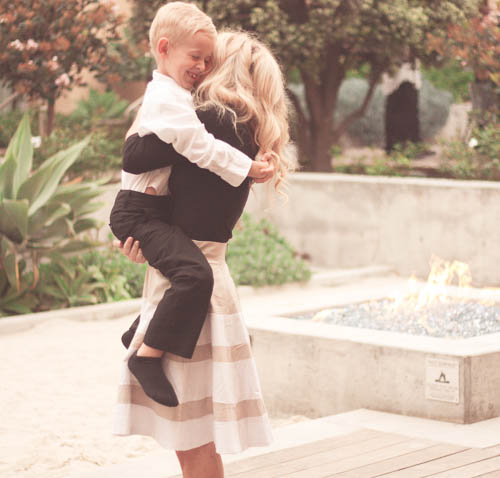Terrible “Twos” (Part 2)
I get it.
You’re in the trenches with a toddler and need practical help.
You need to have a goal, a big picture, a plan to be able to grasp, and you need to know exactly what steps to take to get there. I’m hoping you read the first article that gives the birds-eye overview of training and discipline. I’m also hoping that you have read Shepherding A Child’s Heart by Tedd Tripp. It is ALWAYS imperative that you know the WHY before the HOW.
With that said…here is the best of what I’ve got for:
How To Handle The Terrible Twos…and Beyond…
-
Right Away, All The Way, With a Happy Disposition
You might be wondering when to discipline and when not to. In our home we have used this particular phrase: “You must obey Mom and Dad “RIGHT AWAY, ALL THE WAY, and WITH A HAPPY HEART.” That is how we define complete obedience. All three must be present for the child to have fully complied with a command or instruction. Ephesians 6:1 “Children, obey your parents in the Lord.”

-
Be Proactive In Training
In order for your child to obey completely they must first understand what is required of them. It is kindness to show our children what we expect before we discipline them for not doing it.
TrendingThese three phrases of obeying right away, all the way and happily are your base line for where you will begin training. You want to create ‘practice exercises’ in the home to teach your child to obey right away, all the way and to do so happily. If the child only does two of the three requirements, then keep practicing until all three are met. When your child does finally do it, praise him and encourage him!
Start with basics like “come here please,” “stop,” “no,” and then keep going from there. Your child needs to understand what to do when you say a particular command. The same will apply for putting on their shoes, putting toys away, how to share, teach what your child SHOULD do when they are finished eating (most kids just throw food onto the floor). The list is endless. There is so much for our kids to learn and they are like little sponges that can ‘get it’ so quickly!
****Remember: Training is the teaching time when your home is peaceful, NOT in the heat of the moment. Training is taking a skill or behavior that you would like your child to learn and teaching that skill with love and encouragement during normal times in the day. Be intentional. Carve out time to do this. Enjoy this part of the process.
Q: How do you know if your child is old enough to be able to be trained?
A: I like to tell parents that if their baby can reach their arms out to ask to be held or picked up then your child is old enough to begin training. First training exercises are for babies about 9-10 months old and will be very simple, but very effective.
Ex: Teaching to not grab glasses off of your face, teaching to stay on a blanket without crawling off, teaching to look at you when their name is called, teaching what “no” means, teaching not to touch a computer, teaching how to put food away on their tray, etc.

-
Training Issue or Discipline Issue?
Training: If my child is acting out on something I have NOT yet trained for, I personally always give a “warning” rather than discipline. But immediate training will follow the warning to not repeat that particular behavior.
Discipline: If the skill HAS already been trained/taught, the next thought in my mind is whether or not my child obeyed the command I gave right away, all the way, with a happy disposition.
Real Life Example: I ask my child to take their shoes off, put them away, and walk upstairs to put on pajamas (which is a compound command that a young toddler is old enough to handle). He responds by doing what I asked but lets out a huge whine, grunts loudly, and stomps his feet all while doing what I commanded.
Has my child disobeyed?
Yes.
Even though he is doing the action, I do not consider that complete obedience. I would then say to my child, “Son, Stop. Look at my eyes.”
(child does so but gives me an angry stare)
“Your actions are disobedient and will not be tolerated. You body is doing what I asked, but your mouth and your face are not happy. You are showing mom that you are angry in your heart. You have one chance to come back to the exact same place where you started and try that entire command again. You are to obey right away, all the way and happily.”Depending on the mood of the child in that moment he will either go back, re-do that command (yes, I literally have him go back and stand in the exact same spot and I speak the original command again) in the right way…or my child will once again go through the motions but with the same angry disposition. If the child chooses to disobey again I will calmly, but firmly, say, “Okay, son, you have made your choice to disobey again. I’m saddened by your choice, but you need to meet me in the bathroom.”

-
Designate A Place
Do not embarrass your child and discipline him in front of others. Your goal is never to shame him but to bring him to repentance. If you take these steps with others watching the focus will not be on whatever you say, rather it will be on what others are thinking. I always recommend having a private place to speak with and discipline your child. Jesus taught us, “If your brother sins against you, go and tell him his fault, between you and him alone. If he listens to you, you have gained your brother.” Matthew 18:15
We have chosen the bathroom as the “go to” spot, but any private place in the house will do. This is especially helpful when you have more than one child and you first have to take care of the one not in trouble. Remember, though, that when times are calm you also must train your child HOW you expect them to walk to the bathroom when you give that command. Slamming a door, stomping their feet, wandering off to another spot in the house, hiding, screaming as they walk…none of those are obedient ways to get to that spot.

-
ALWAYS Train and Discipline IN LOVE:
God disciplines those He loves. Your child is not just a project to take on. Love must undergird everything you do. Your child is a person who needs love and needs to see the Gospel lived out through you.
“Love is patient, love is kind. It does not envy, it does not boast, it is not proud. It is not arrogant or rude, it does not insist on its own way, it is not irritable or resentful, it does not rejoice at wrongdoing, but rejoices with the truth. Love bears all things, believes all things, hopes all things, endures all things.”
1 Corinthians 13:4-7An attitude of love and kindness deals not only with our children’s hearts but ours. Our responses to our children’s actions, including their sin and disobedience, matters in a huge way. The anger, control, and selfishness in our own hearts can so quickly bubble up and we cannot ignore it.
In Galatians 5:22 we see the fruit of the Spirit is love, joy, peace, patience, kindness, goodness, faithfulness, gentleness, and self control. We need to ask ourselves, are we responding in love? Are we teaching with kindness? Are we training in gentleness? Are we patient? Are we being faithful to keep going even when it’s hard.
If you have not handled yourself well in responding to your child, apologize to your child and ask for forgiveness. We are imperfect people and we blow it all the time. Yet even in my own wrongdoing I want to teach my kids that I will be predictable in my imperfection. WHEN I wrong them, because I will, I will repent and apologize and ask for their forgiveness. I will point them once more to look to the only perfect example, which is Jesus, not me.
I don’t care if my child is a 1 year old and only understands 1/3 of what I am saying, or they one day are a grown adult and taller than me…if I have wronged someone, fully apologizing is my first priority.
Real Life Example:
My son disobeys by hitting another child. Confession: If I’m honest I don’t think anything gets me mad quite like one of my kids hurting another. The mama bear comes out quick with this one. There’s almost no buffer time for me…I get super mad really fast. Anyway…let’s say one son hurts another son on purpose. I respond by immediately raising my voice, grabbing his arm and yelling at him to go straight to the bathroom. When I meet him in there I yell at him about how foolish what he did was. My son is crying and I am fuming mad. Would this be the best time to discipline or spank my child?
Uh…No.
I leave the bathroom for a few minutes to go back and check on the son that was hurt. I take a moment to get myself under control. I pray for peace and think through what it is I’m trying to teach in that moment. Then I go back in and I begin with an apology. “Son, mom spoke to you in a way that was unkind. I love you and I really do want good for you. But I also want good for your brother. For you to hurt him on purpose is not loving, but mom wasn’t loving either. Will you forgive me for speaking so harshly toward you?”
“Yes.”
At this point I have a choice. I can follow through with controlled and loving discipline (meaning spankings) resulting with an apology to the child that he hurt. OR I can hold my child closely and we can talk through the sin that is in BOTH of our hearts. The Bible is clear that a soft answer turns away wrath and I have seen this to be SO true over and over again in this kind of setting. There is a sweetness that follows whenever I repent to my children. No parent is perfect and I would be the first to raise my hand in admitting I’m far from it. But I am consistent at letting my kids know that too. When they see me as their mom owning my wrongs, apologizing and seeking forgiveness, I am not only leading by example but I am showing them there is something bigger and beyond us that we both need. I need a Savior too. “For ALL have sinned and fall short of the glory of God…” For me to point my children to the only One who is perfect is the weightier lesson in that moment.

-
Think Through Verses That Apply:
Training is not just for our children to learn how to respond. It is for us, as moms and dads too. Your child’s disobedience teaches you about your own dependence on God. When there is down time and you have the house quiet, even if it is for five minutes a day, learn your Bible and search for verses that you can cling to in the moment. There is a Child Training Bible kit that I highly recommend that I use ALL of the time in our home. It is a bit of work to get it set up but once you have it you can refer to it daily.
This discipline of thinking through verses that apply to our own hearts first will also give you a great deal of insight into what the issues are going on in your child’s heart. And keep this in mind as you learn and grow: Sometimes it’s more than dependence that my Heavenly Father is after it’s complete desperation for Him. We aren’t learning these things to be able to quote them. We learn to be able to live it out.
Real Life Example: If a child steals a toy, the deeper issue is that it is not loving, in fact is is rude and selfish to take without asking. Rather than yelling and then quickly swatting, the conversation (beginning with eye contact on your child’s level) could look like this…
“Sweetheart, does that toy belong to you?”
“No.”
“Did you take it without asking?”
“Yes.”
“What is it called when someone takes without asking?”
“Stealing.”
“That’s correct. And the Bible is clear that stealing is a sin. Were you loving or unloving toward your brother when you stole from him?”
“Unloving.”
“That’s right honey, and love is never rude. Love is never selfish. I want you to give the toy back to your brother and patiently wait until he is finished. Then you will ask him if you may play with it. Please go and make things right with your brother.” (Always offer what TO do, rather than just telling your child what not to do.)
returns toy…”I’m sorry for being selfish and unloving toward you. Will you forgive me?”
***Note: If child will not obey the command you gave of returning the toy and saying what you have requested…then the issue becomes a discipline issue.

-
Learn To Talk WITH Your Child, Rather Than AT Your Child.
You must learn to make eye contact, to slow down, to listen, to speak calmly and to ask good questions. Seek to understand what might be going on in your child’s heart. Learn to evaluate and discern and teach them what it is like to communicate effectively. Learning to discover internal issues will help you know what aspects of the Bible need to apply to that particular situation. Teach your child to express themselves with words rather than resorting to screaming or crying.
Real Life Example: My child is running throughout the house while another child is napping. It is important to teach my child at a very early age to be aware of his surroundings and to have concern and care for his new baby brother. I begin with saying the child’s name one time. the simple command to “Stop.” My child stops and looks at me. I then say something like, “Honey, your new baby brother is taking a nap. You are running and being very loud. Is that loving toward your brother?”
“No.”
“You’re right, it’s not. If your baby brother doesn’t get the rest he needs then he won’t be happy and it’ll be a tough thing for mom too. I need you to think of his needs and be quiet for him.”
“Okay mom.”
If my older son continues to be loud and disregards my command then I will move to discipline.

-
Develop a Common Language & Choose The Right Words:
Giving accurate Biblical words or catch phrases to what actions or sins a child is continuing to engage in will help to develop a Biblical understanding of the truths and principles behind the instruction. Replace worldly terminology with Biblical terms. A few examples to use are:
Promoting peace
Disrespect/Respect
Disobedient/Obedient
Stirring up trouble
Returning evil for evil
Selfishness
Pride
Anger
Self-Control
Loving one anotherUsing Biblical terminology will call the disobedient action what it is. God’s words have power and it is God’s wisdom that will get through to the hearts of your children. Hebrews 4:12 explains, “The Word of God is living and active; sharper than a double edged sword; it penetrates even to dividing soul and spirit, joints and marrow; it judges the thoughts and attitudes of the heart.”
Real Life Examples:
-“Were you promoting peace or were you stirring up trouble?”
-“Was ignoring your bother loving or unloving?”
-“Are you choosing to repay evil for evil when you hit back?”
-“You need to be self-controlled. You are not under control when you throw a fit.”
-
Talk Through a Way of Escape and Role Play to Reinforce.
1 Corinthians 10:13 says that when you are tempted, “God is faithful; he will not let you be tempted beyond what you can bear. But when you are tempted, he will also provide a way out so that you can stand up under it.” If our Heavenly Father has set such an example for us, shouldn’t we bestow the same kindness toward our own children?
When we offer only discipline for wrong behavior and fail to train in the correct behavior, we will exasperate our kids because they are unaware of the way out. This provokes our children to anger…not to mention us too, having to deal with the same disobedient behavior repeatedly. This is a HUGE deal, so I hope you’re still paying attention: Parents must teach the correct behavior anytime a child is corrected for wrong behavior.
Practical: It rarely matters where we are…we have done this at home, in the grocery store, in parking lots, at friend’s houses, at church, in the middle of Disney, and in the aisles of Costco…if I have to correct a behavior, I will have my child act out the correct behavior with complete obedience. If obedience is not complete, then we will continue on with either more attempts to practice or move to discipline.

-
Disobedience Is Not A Personal Offense
I KNOW it’s going to feel that way, it often does for me too. Yet when our children do not obey our commands, it is not to be taken personally. Your child’s disobedience does not measure your value any more than his obedience showcases your achievement. We cannot allow ourselves to become angry at what they have chosen to do because their sin is ultimately what is in their own hearts. It right for us to hold them responsible for it but not to become easily angered by it. Ultimately their sin is against a holy God and it is kindness for us to free them from what is stuck inside of their hearts. Again, please read the book from Tedd Tripp Shepherding A Child’s Heart for more of an overview on this…trust me, it’s worth the time.

-
Discipline.
There is no clear plan Biblically for exact steps as to how this part should go. I honestly believe that every couple should talk through in detail what you feel comfortable with. Talking through it ahead of time not only serves as a consistent standard for the child to understand, but it can also be a protection for any parent that might struggle with taking things too far in regards to spankings.
We have taken the approach that our children will be spanked with a wooden spoon. We have chosen the amount of spankings based on their age, believing that the consequence increases as they grow older.
For a two year old it is 2 spankings for each offense. For my 7 year old its 7…and so on. The only time when that number increases is if my child’s heart is still angry after the first round. If there is anger, or hitting or grunting or any of the such, then I will calmly, but firmly, spank that same amount again. I will then ask my child, “Are you ready to soften your heart now?” If there is more anger and more grunting, then I will repeat the same round again until the child is clearly softened. Never can we become angry in those settings. In fact it should move us to the opposite. The more hardened my child becomes, the more compassion I have for him. It breaks my heart to see my child continue to fight what is God’s best. I will remain steadfast in my aim to bring him to repentance, but my heart is soft as I gently plead with him to not stay hardened.

-
ALWAYS RESTORE!!!
Restoring a child to a joyful disposition is absolutely necessary. One of the main points of training and discipline in the home is to create peace. When a child is left to do whatever he wishes with no regard to anyone but himself it is extremely frustrating, not to mention dangerous. If mom or dad is continually angry and fed up, then there isn’t peace and there certainly isn’t oneness.
I would strongly argue that training AND restoration are far more important than even the spankings themselves are. A child that does not feel close to his parents will likely continue to act out all the more. I am not a child psychologist and I have no fancy book to quote from, but I can say from quite a bit of experience that a child who feels unloved will act in an unloving way.
Whenever I end a discipline session I do whatever it takes to make sure my child knows he is loved. I remind him of why I discipline, I remind him of my love for him, I pray with him and confess my own sin with him. Sometimes we sing a song together. By the time we leave that bathroom we are smiling and often times even laughing with one another again.

Final Thoughts:
Discipline and training are never ending opportunities to remind our children of their need for new hearts, not just good behavior. No matter how obedient, or how compliant their actions are it will never be enough. Jesus lived a perfect life in their place for their sin and it is a joy to be the one to continually teach, explain and live out that truth before my kids day in and day out. “For God so loved the world that He gave His only Son that whosoever believes in Him will not perish but have eternal life. For God did not send his Son into the world to condemn the world, but in order that the world might be saved through Him.” John 3:16-17
In case you’re wondering, yes, this process takes a LOT of time and a LOT of work. It’s hard and there are plenty of days I get tired and don’t want to spend another minute in that bathroom. But I promise, the work is worth it. You will reap what you sow. The harvest of a well trained, well loved, loving child who understands their need for a Savior and the gift of grace is a sweetness like no other.







Time for me to re-re-re-read this one! <3
Meg,
Your blog is so wonderful. I truely loved this post. It remimds me of all the things I learned from you and Matt while in ABQ. Thank you for continuing to share what you have learned. It is a blessing to me and others. Love you so much!
Thank you Kristina!
Hi Meg, I love this blog & have forwarded it on to our daughters. I love the discipline you present by your obedience to God. The best teacher is a good example, not a perfect one, but one that is humbly working on it.
Thank you so much Amy! I hope it encourages your daughters in some way! Your encouragement means the world to me!